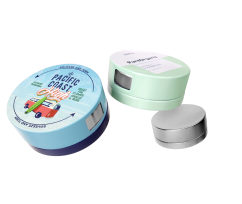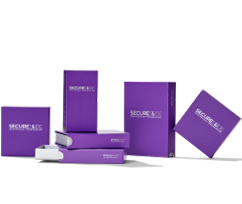Recyclable Bags: A High-Level Overview
We are in the plastic age, where parts of what we wear and use every day are made from some form of plastic material. Plastics aren’t created equal. What kind of material makes up our daily use of plastic?
What’s more, which of these materials are recyclable plastics? Being sustainable means knowing how to maintain, reduce, or recycle products that may be harmful to the environment.
Many plastic films are made from recyclable polyethylene resins, but each material has unique properties that affect its recycling process. Take a look at our overview of the high-level recyclable bags on the market.
What Is Plastic Resin?
Plastics are a by-product of crude oil refinement made by separating and heating the different chemicals in the crude oil. The result is hydrocarbon molecules that create a chain, known as a polymer.
During the thermal cracking process, continued polymer heating occurs. Placing the polymer under a high-pressure catalyst breaks down the long hydrocarbon chain until the larger molecule breaks into propylene, ethylene, and other hydrocarbons. The result? Long-chain hydrocarbon plastic resins.
The thermal cracking process also incorporates additives like flame retardant chemicals, plasticizers, and dyes. These additives help determine plastics’ properties, like color, resistance to heat or exposure, or hardness properties.
The cracking process ends with the formation of a compound called polymer resins. The polymer resins undergo the final heating, molding, and cooling process to create different plastic material characteristics.
The end products of a polymer typically take the form of pellets or beads. Manufacturers use blow molding or injection molding to make products like plastic bottles or bottle caps.
Manufacturers create products for food packaging, chemical products, and recyclable bags from these plastic resin materials. The properties of plastic resins and modern design technologies make it possible to create bags that fit a multitude of consumer needs.
For instance, thermoplastics make food packaging bags because they easily fold and bend into different shapes at affordable prices. The success of the recyclable bag depends significantly on the type of plastic resin you choose and its properties.
Some types of plastic resin that are common in packaging applications include:
- Linear low-density polyethylene (LLDPE)
- Low-density polyethylene (LDPE)
- Medium-density polyethylene (MDPE)
- High-density polyethylene (HDPE)
Low-Density Polyethylene Plastic Resins (LLDPE)
LDPE plastic resin combines different polyethylene polymers. The structure leaves space between the molecules, making them less dense, more flexible, and lightweight.
They also have a low tensile strength and melting point, making this material ideal for heat sealing. These bags are translucent and the most prone to ripping among the poly bag lineup.
The LDPE material is suitable for manufacturing temporary storage bags like garment bags, bubble wrap, or produce wrap. These bags are ideal for grocery shopping. This style of bag is found mainly in restaurants and other food-focused outlets.
Linear Low-Density Polyethylene Plastic Resins (LDPE)
LLDPE bags have a higher tensile strength, impact, and puncture resistance than the LDPE. Their stretchability, elongation, and flexibility are unmatched. LLDPE bags possess the ability to create thinner films without losing their strength.
Using these materials means you’ll use less material on your bags yet still enjoy the same benefits when using LDPE. This material is best for making food bags, garbage bags, and newspapers. Linear low-density polyethylene plastic resins are recyclable and reduce environmental impact.
Medium-Density Polyethylene (MDPE)
Medium-density polyethylene, or MDPE, combines the LDPE and HDPE properties. This material isn’t as dense as HDPE, but it is still heavy. MDPE is not as clear as LDPE, nor are they opaque like HDPE.
The good thing with the MDPE material is its resistance to chemicals. It is not prone to cracking, has low tensile, and stretches easily. These bags are perfect for making a protective layer for your packaging products.
High-Density Polyethylene (HDPE)
High-density polyethylene forms when minimal branching occurs during the polymerization process. The end product is a long chain of straight molecules, making a tightly packed, dense, and less flexible plastic material. The plastic is resistant to puncture, tear, chemicals, heat, and water.
These dense and opaque plastic bags can also hold large volumes of weight and conceal them without breaking during transportation. The bags are suitable for transporting bulky items like construction material and dry foods.
What Determines the Types of Plastic Bags That Can Be Recycled?
Every type of plastic resin has its unique properties. Each kind has a distinct melting point. When recycling plastics, it’s crucial to know the material or resin code that makes a product.
Knowing the material types gives you a clue about the required recycling process. For instance, products made with more than one type of plastic resin are labeled with the resin code 7 and cannot be recycled, whereas monomaterial plastics, such as PE or PET, are recyclable.
A plastic resin is only viable for recycling if it has a feasible use in another product or application. Alternatively, it is also considered recyclable if the recycled product can turn into something new and better after recycling. Some plastics do degrade after recycling.
Are plastic bag materials separable from other recyclables?
Separating and sorting recyclable plastic is very important in maintaining the integrity of the new recycled product. A monomaterial plastic bag is recyclable if there’s a possibility of splitting or sorting it out from other waste and recyclables.
This process can take two forms:
- Companies can use a more complex method like a high-tech solution float sink to sort out plastics from the other waste.
- Companies can use a collection container to separate plastics from the start.
Should Plastic Bags Be Separated?
Absolutely. Plastics come from different polymers, all of which have differing characteristics. During recycling, you have to ensure that each polymer maintains its features.
Each specific material must be separated as part of the recycling process.
Do Recycled Materials Have a Feasible Use?
Yes. A recycled material should be able to turn into the original form or product after recycling. For instance, after undergoing the recycling process, your bottle becomes a recycled bottle.
The recycled bottle’s value is the same.
Recycled material is also said to have feasible use if it can change into something new and better after recycling. A good example is recycling a plastic bag and getting a new refined bag.
Which Types of Plastic Bags Are Best Recycled?
Resin products are recyclable as more than half of resins are used to make other products. The plastic bag that is best recycled depends on the plastic material. The only requirement is to make sure that the recyclable plastic bag is clean and dry.
The best plastic codes to recycle are Density Polyethylene Plastic Resins and Low-Density Polyethylene Plastic Resins. High-Density Polyethylene (HDPE) is one of the best recyclable options.
Conclusion
Did you know that the world consumes 500 billion plastics every year? Reports show that most plastics end up in landfills, with only 9% undergoing recycling. These landfills take thousands of years for a single plastic bag to degrade.
When these materials do break down, they don’t degrade completely. Instead, they change to microplastics, take in toxins, and contribute to the cycle of environmental pollution.
Recyclable plastic options are incredibly important. But while we have come a long way in the fight against plastic pollution, there is plenty of work left to do. Choosing the right kind of recyclable bags for your purpose can lead to sustainability efforts your company can be proud of.
Sources:
What is Recyclable | Plastic Film Recycling



